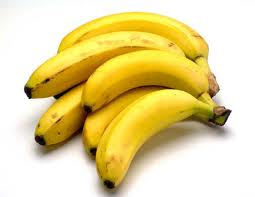Vanilla was the last plant I can remember genetically engineering. The challenge was to come up with a new flavour. How do you describe the flavour of vanilla? How do you design a new flavour when all you have is your existing flavours? Do you redesign the way humans perceive flavour, or create a new flavour for the existing taste receptors? Don't believe me? See My Story.
The other important genetically enginered plant is the grape, and you can see that story here:
The Monsanto Company (NYSE: MON) is a US-based multinational agricultural biotechnology corporation. It is the world's leading producer of the herbicide glyphosate, marketed as "Roundup". Monsanto is also the leading producer of genetically engineered (GE) seed; it provides the technology in 90% of the genetically engineered seeds used in the US market.[2] It is headquartered in Creve Coeur, Missouri.[3]
Agracetus, owned by Monsanto, exclusively produces Roundup Ready soybean seed for the commercial market. In 2005, it finalized purchase of Seminis Inc, making it the world's largest conventional seed company.
Monsanto's development and marketing of genetically engineered seed and bovine growth hormone, as well as its aggressive litigation, political lobbying practices, seed commercialization practices and "strong-arming" of the seed industry[4] have made the company controversial around the world and a primary target of the alter-globalization movement and environmental activists. As a result of its business strategies and licensing agreements, Monsanto came under investigation by the U.S. Justice Department in 2009.[4][5]
Vanilla is a flavoring derived from orchids of the genus Vanilla, which is native to Mexico. Etymologically, vanilla derives from the Spanish word "vainilla", little pod.[1] Pre-Columbian Mesoamerican peoples cultivated vanilla and Spanish conquistador Hernán Cortés is credited with introducing both vanilla and chocolate to Europe in the 1520s.[2]
Vanilla is the second most expensive spice after saffron,[9][10] because growing the vanilla seed pods is labor intensive.[10] Despite the expense, vanilla is highly valued for its flavor, which author Frederic Rosengarten, Jr. described in The Book of Spices as "pure, spicy, and delicate" and its complex floral aroma depicted as a "peculiar bouquet".[11] As a result, vanilla is widely used in both commercial and domestic baking, perfume manufacture and aromatherapy.The flowers can only be naturally pollinated by a specific Melipone bee found in Mexico (abeja de monte or mountain bee). This bee provided Mexico with a 300-year-long monopoly on vanilla production, from the time it was first discovered by Europeans and the French first transplanted the vines to their overseas colonies, until a substitute was found for the bees. The vines would grow, but would not fruit outside of Mexico. Growers tried to bring this bee into other growing locales, to no avail. The only way to produce fruits without the bees is artificial pollination. And today, even in Mexico, hand pollination is used extensively.
- 2005: Monsanto purchases Seminis, a leading global vegetable and fruit seed company, for $1.4 billion.[17]
- 2007: In June, Monsanto completes its purchase of Delta and Pine Land Company, a major cotton seed breeder, for $1.5 billion.[18] Monsanto exits the pig breeding business by selling Monsanto Choice Genetics to Newsham Genetics LC in November, divesting itself of "any and all swine-related patents, patent applications, and all other intellectual property."[19][20]
- 2008: Monsanto purchases the Dutch seed company De Ruiter Seeds for €546 million,[21] and sells its POSILAC bovine somatotropin brand and related business to Elanco Animal Health, a division of Eli Lilly and Company in August for $300 million plus "additional contingent consideration".[22]



Madagascar (especially the fertile Sava region) accounts for much of the global production of vanilla. Mexico, once the leading producer of natural vanilla, with an annual 500 tons, produced only 10 tons of vanilla in 2006. An estimated 95% of "vanilla" products actually contain artificial vanillin, produced from lignin.[13]
Many of Monsanto's seed products are specifically genetically modified to make them resistant to Monsanto produced agricultural chemicals, such as "Round Up" herbicide. In a study published in the International Journal of Biological Sciences, researchers applied a different statistical analysis on raw data obtained from Monsanto and concluded that these GM corn (maize) varieties induced a state of hepatorenal toxicity.[32] They suggested that the presence of the new pesticides associated with the inserted genes were responsible, although the possibility that this could be due to a mutation during the transformation process was not excluded.[32]
Monsanto was drawn into the Genetically modified food controversies over the Pusztai affair.[33] Dr. Arpad Pusztai's experiments suggested that it was the process of genetic engineering, not the presence of the inserted lectin gene that altered the thickness of the gut epithelium in rats when fed genetically modified potatoes.[34] In other words it was the process of genetic engineering itself, not the presence of pesticides caused by the engineering which caused the damage to rats. The publication of this study has resulted in much controversy.[35]


